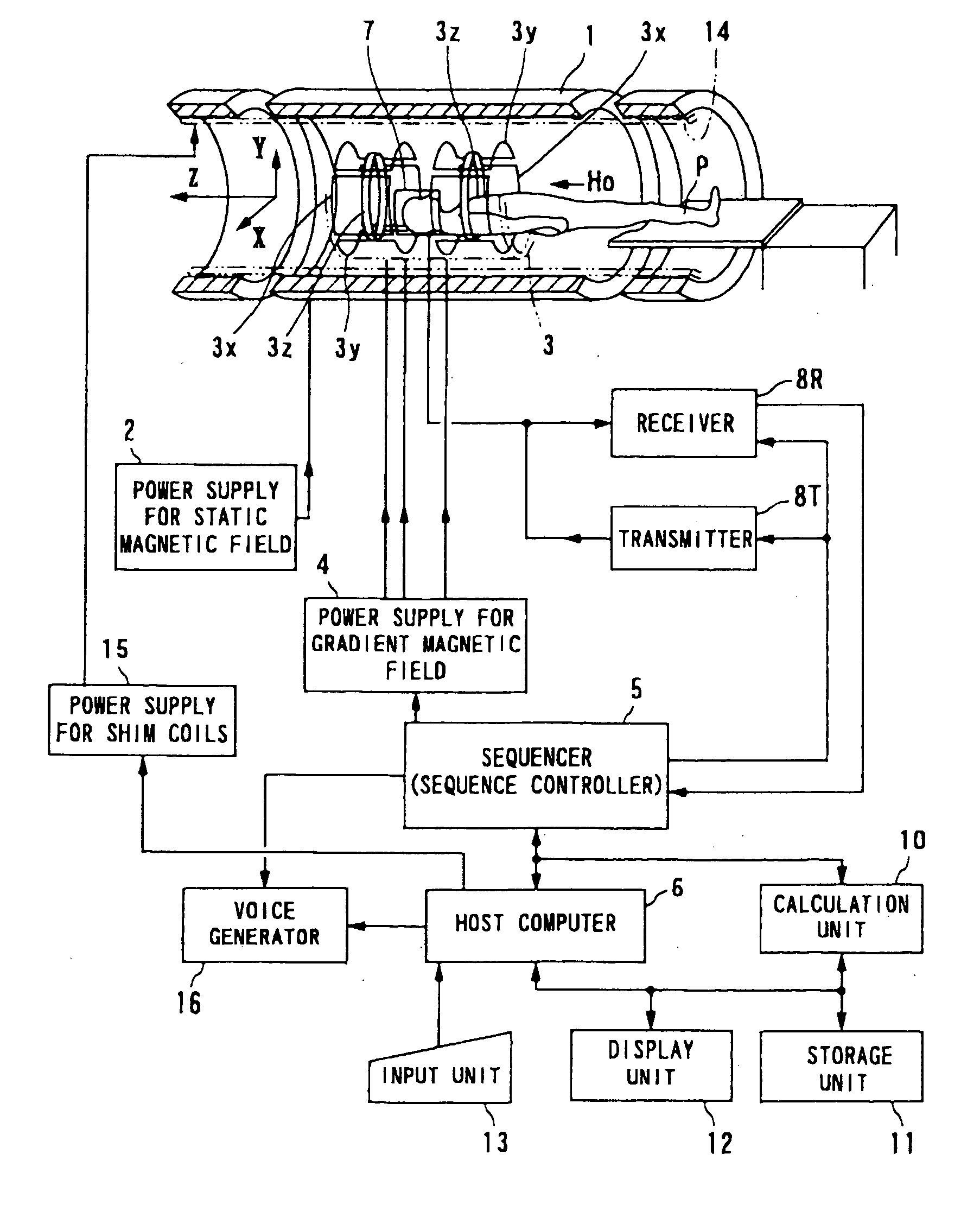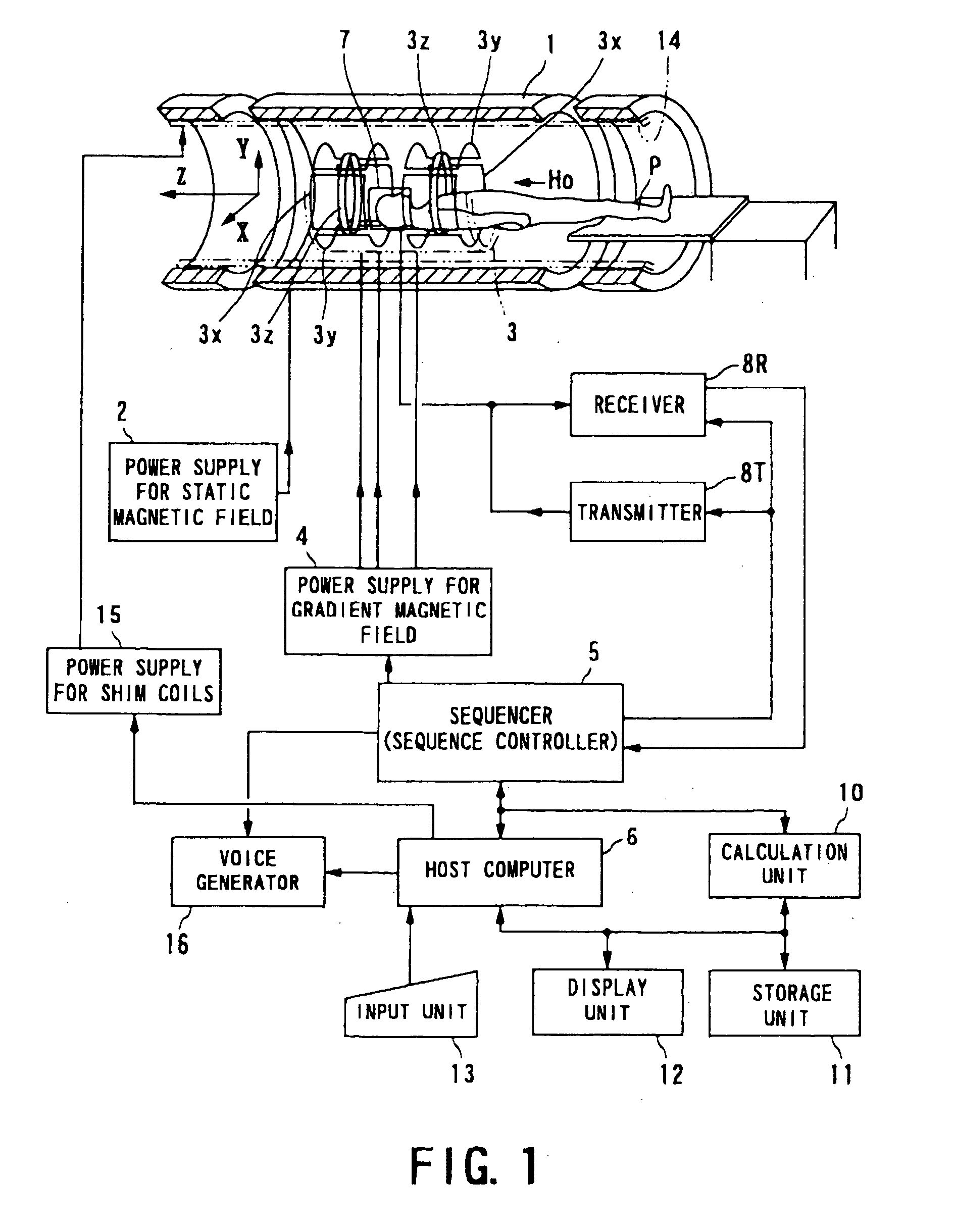Magnetic resonance imaging system for non-contrast MRA and magnetic resonance signal acquisition method employed by the same
a magnetic resonance imaging and non-contrast technology, applied in the field of magnetic resonance imaging systems for medical use and magnetic resonance signal acquisition methods, can solve the problems of large mental and physical burden on subjects, inability to administer contrast medium to subjects, and high cost of such examinations, so as to reduce patient throughput, prevent deterioration of image quality, and reduce the burden on subjects
- Summary
- Abstract
- Description
- Claims
- Application Information
AI Technical Summary
Benefits of technology
Problems solved by technology
Method used
Image
Examples
first embodiment
[0023] Referring to FIGS. 1 to 4, description is provided on the first embodiment of the magnetic resonance imaging system and a magnetic resonance signal acquisition method related to the present invention.
[0024]FIG. 1 schematically shows a configuration of the magnetic resonance imaging (MRI) system in the first embodiment.
[0025] The magnetic resonance imaging system comprises a table section for placing a subject P to be examined, a static magnetic field generating section for generating a static magnetic field, a gradient magnetic field generating section for adding position information to the static magnetic field, a transmitter-receiver section for transmitting and receiving a high-frequency signal, and a control-operation section for taking on control of the entire system and image reconstruction.
[0026] The static magnetic field generating section comprises, for example, a superconducting magnet 1, and a power supply 2 for static magnetic field for supplying power to the m...
second embodiment
[0062] With reference to FIGS. 5A to 5C to FIGS. 7A and 7B, a second embodiment of the magnetic resonance imaging system according to the present invention is described.
[0063] The second embodiment is characterized in that the cardiac phases are estimated by using a coil unit exclusive to a hart rate meter, and on the basis of the intensity of the MR signal acquired by the coil unit. Particularly, in the magnetic resonance imaging system related to the first embodiment described above, the actual site of imaging has been two-dimensionally scanned, as the measuring scan, using the phase contrast technique. Instead, in the present embodiment, an arrangement is so made that a coil unit exclusive to a hart rate meter is mounted on an arm (including fingertips, wrist and joints) of a subject, and the MR signal reflecting the heart rate are acquired from the arm by way of this coil unit.
[0064]FIGS. 5A to 5C illustrate an appearance of a coil unit 20 exclusive to a heart rate meter, whic...
PUM
 Login to View More
Login to View More Abstract
Description
Claims
Application Information
 Login to View More
Login to View More - R&D
- Intellectual Property
- Life Sciences
- Materials
- Tech Scout
- Unparalleled Data Quality
- Higher Quality Content
- 60% Fewer Hallucinations
Browse by: Latest US Patents, China's latest patents, Technical Efficacy Thesaurus, Application Domain, Technology Topic, Popular Technical Reports.
© 2025 PatSnap. All rights reserved.Legal|Privacy policy|Modern Slavery Act Transparency Statement|Sitemap|About US| Contact US: help@patsnap.com



